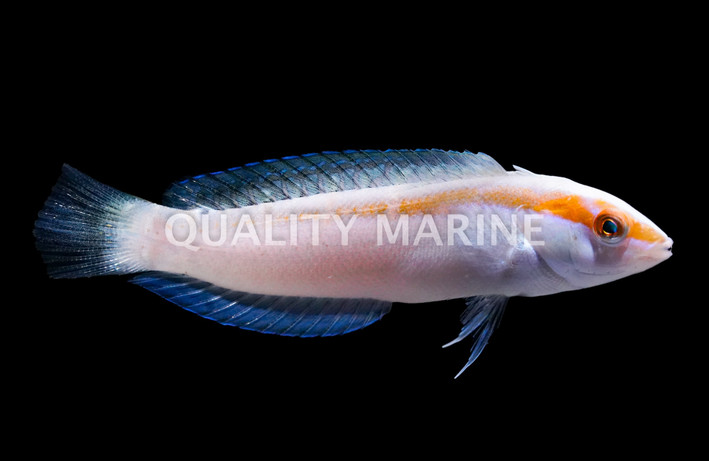Pale Barred Coris Wrasse
(Coris dorsomacula)
The Pale Barred Coris Wrasse are sometimes also known simply as Pinklined Wrasse. Rarely seen in the aquarium trade. Coloration may vary depending on maturity. Juveniles are a pale color overall with a thick dark stripe, thin vertical white blotches on their sides and a small black spot on the rear of their dorsal fin. Adults are green with pink to red stripes fading to spots towards the rear of its body, eight pale thin vertical spots, yellow edged black spot on the rear of its gill cover and a small black spot on the rear of its dorsal fin. Pale Barred Coris Wrasse can grow up to almost 8".
We recommend a minimum aquarium size of 75 gallons or larger for this species.
Water conditions: Salinity 1.020 - 1.025, Temp (F) 72 - 78, pH 8.1 - 8.4, Alkalinity 8 - 12 dKH
-
Care:
 Easy
Easy
 Moderate
Moderate
-
Behavior:
 Agressive
Agressive
-
Diet:
 Frozen Food
Frozen Food
 Live Food
Live Food
-
Habitat:
 Sand Flat
Sand Flat
 Reef
Reef
-
Light:
 High
High


 Easy
Easy
 Moderate
Moderate
 Agressive
Agressive
 Frozen Food
Frozen Food
 Live Food
Live Food
 Sand Flat
Sand Flat
 Reef
Reef
 High
High